Top 6 return management solutions of 2025
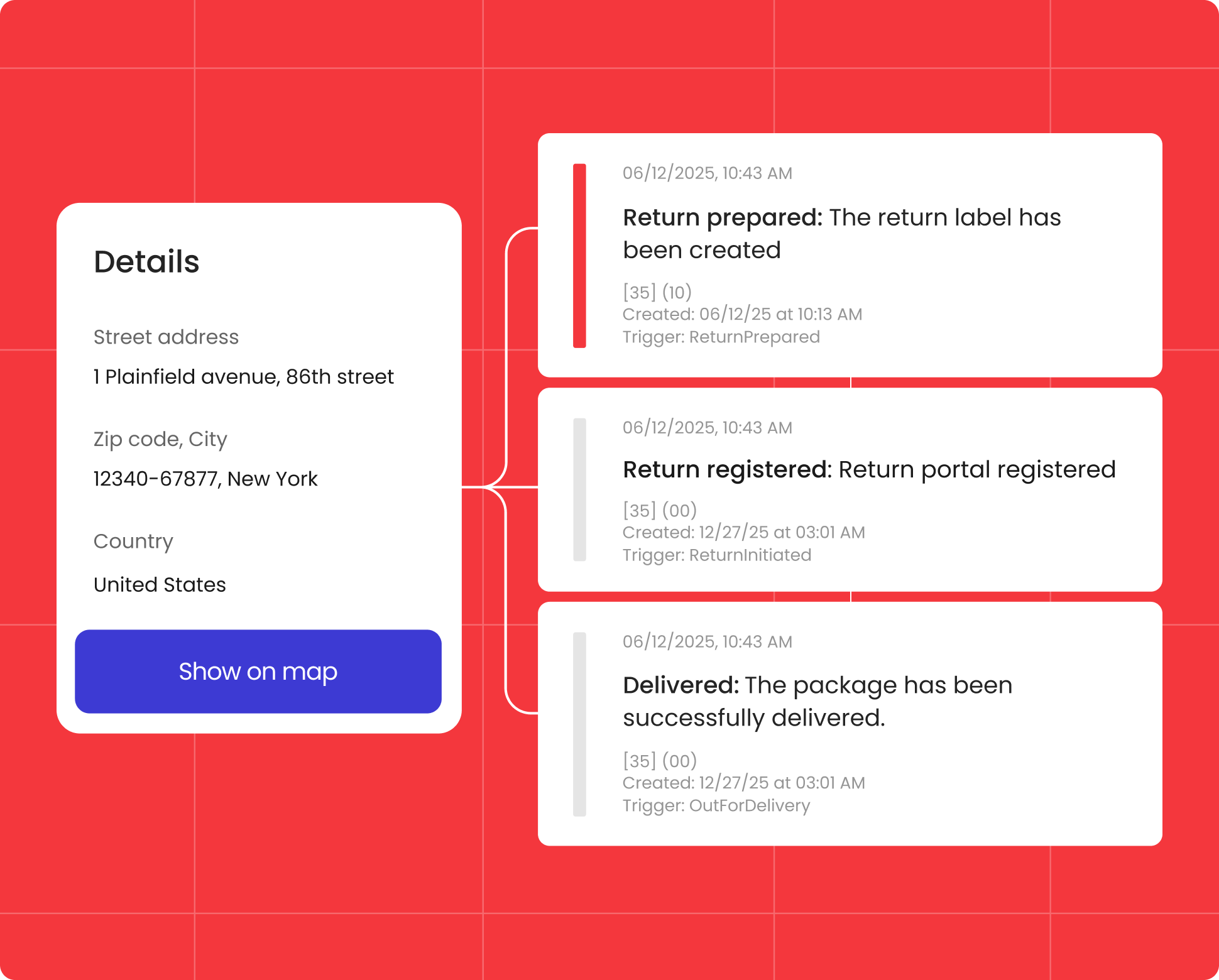
Contents
Gain access to our choosing the right returns management solution guide.
Finding the right returns management solution can be difficult, especially when a majority promise that they have similar features. At the end of the day, it is about what your brand needs to reduce returns and improve processes. By doing so, you can supply your customers with the best experience possible.
In this blog, we will break down the 6 top returns management solutions. This way, you can determine which one would be the best fit for your brand.
Let’s jump in.
The top 6 return management solutions
1. parcelLab
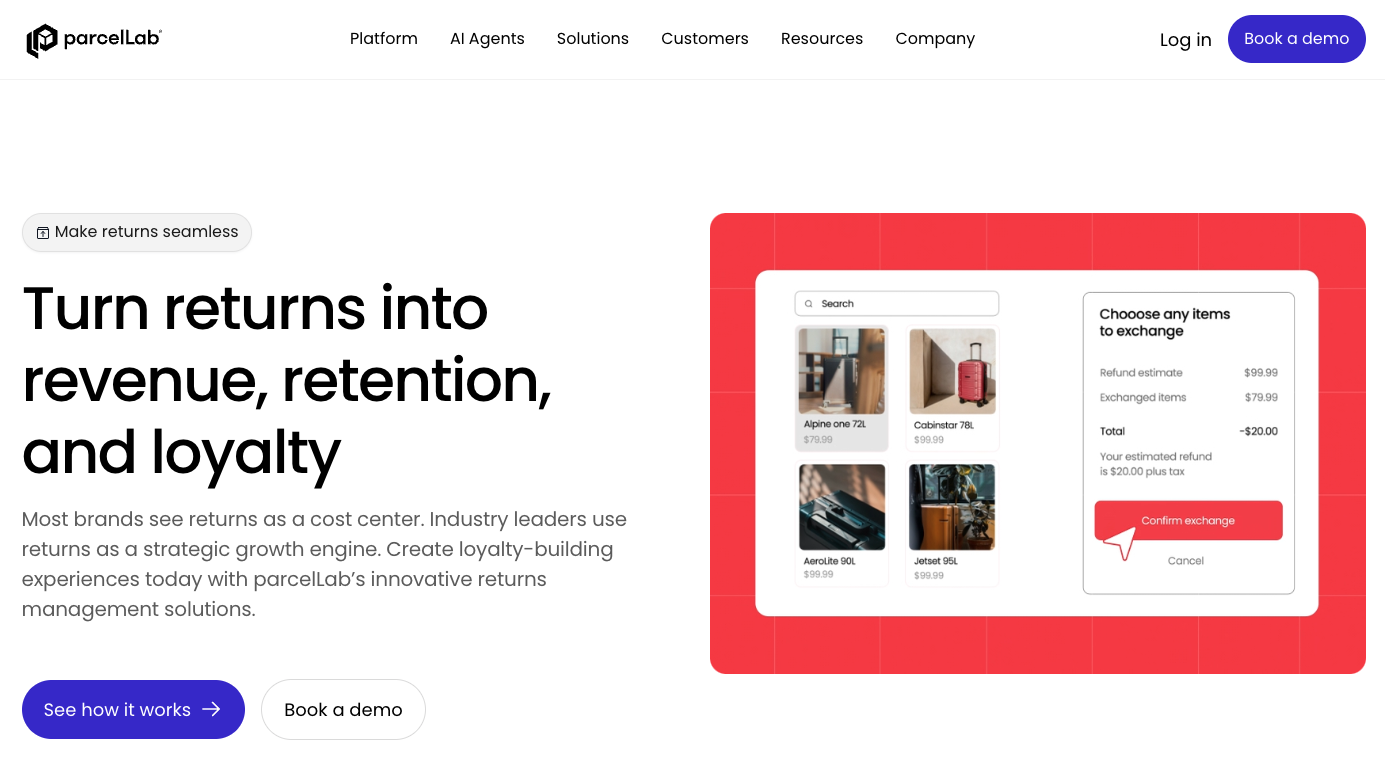
parcelLab empowers global retailers with personalized, data-driven post-purchase and returns management capabilities. With customizable and flexible return portals, the retailer is in the driver’s seat to make sure their experience is as seamless as possible.
Key capabilities:
- Automated returns notifications: Keep customers informed throughout their returns process with real-time tracking and personalized updates.
- Self-service returns portal: Empower customers with a self-service portal that is embedded on your site for a smooth returns journey.
- AI-powered workflows: Optimize returns processing with AI-driven approvals, fraud detection, and smart logistics. Configure personalized returns rules with dynamic eligibility and flexible return periods.
- Returns volume forecasting: Automatically detect unusual return patterns, prevent warehouse congestion, and improve processing efficiency.
*parcelLab is also recognized as a leader in three categories on G2, including package tracking, shipping, and returns management
2. Happy Returns
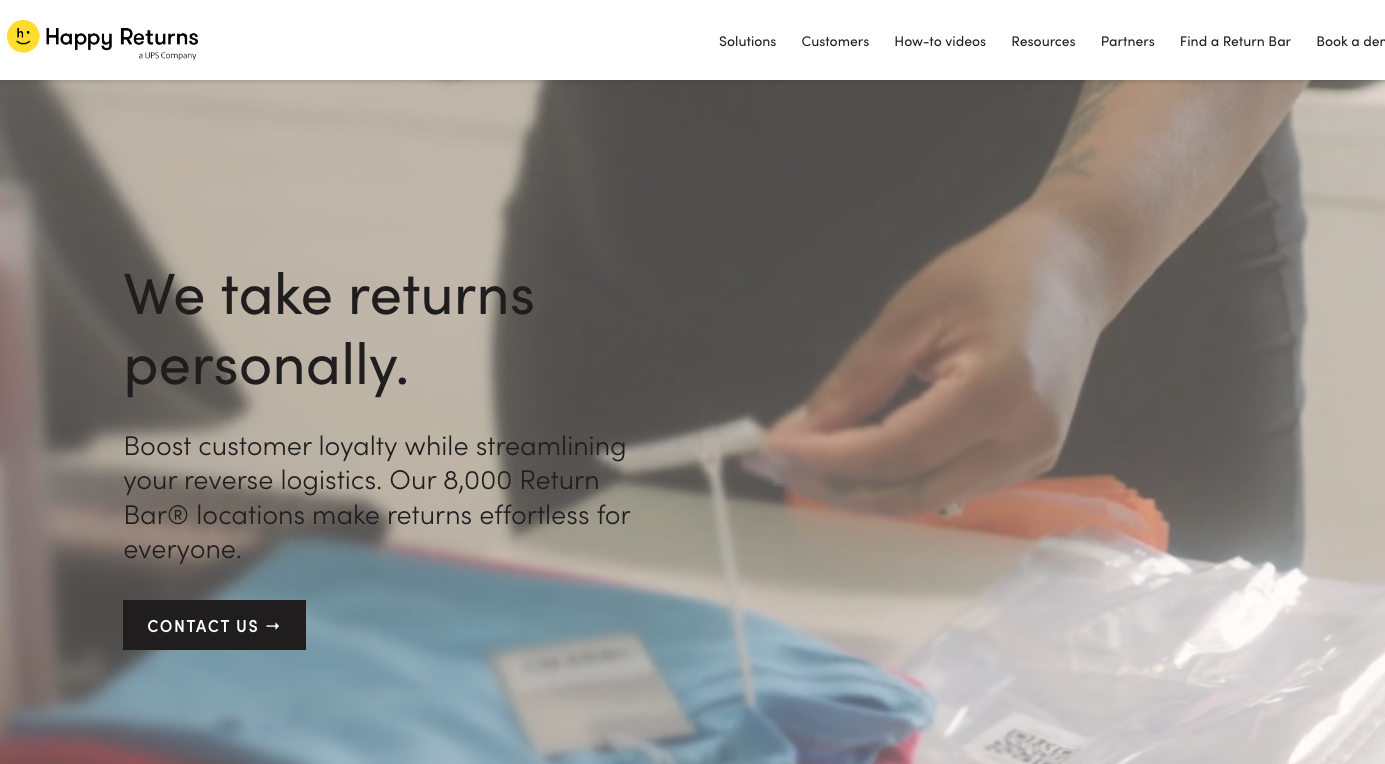
Happy Returns, a UPS company, provides returns solutions for U.S. online merchants and shoppers through a unique combination of returns software plus reverse logistics.
Key capabilities
- Return & exchange portal: Automate returns and enable shoppers to initiate returns or exchanges online, receive a QR code, and drop off items at your store or a nearby return bar location.
- Return bar network: Accept and secure returns at a network of 8,000+ Return Bar locations in the US, including 5,000+ UPS Store retail locations.
- Buy Online, Return in-store: Boost foot traffic to your stores by accepting returns effortlessly with fast cross-brand returns in under a minute, item scanning to deter return fraud, and the ability to prioritize certain store locations in the shopper portal.
- Reverse logistics: Happy Returns can help move returned items where they need to go, whether it is another store, directly to your warehouse, or through their Return Hubs.
3. Narvar
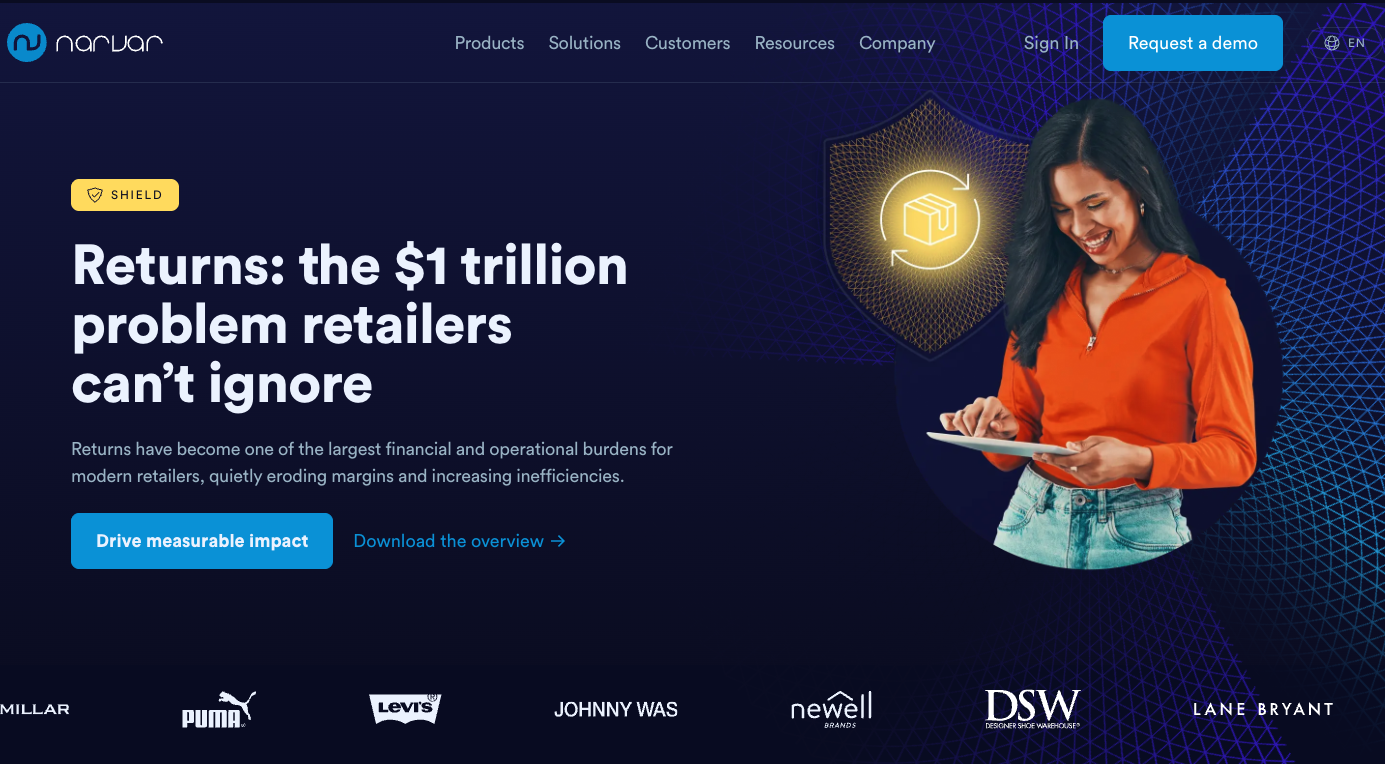
Narvar is a post-purchase experience platform that is more commonly known in the U.S. for offering solutions for tracking, notifications, returns, exchanges, and fraud protection.
Key capabilities
- Minimize loss from policy abuse and fraudulent post-purchase activities. Automatically identify and mitigate risk and reward your best customers
- Incentivize the return outcomes that keep money in your pockets and increase repurchase rate
- Create new sales opportunities when customers are highly engaged during the post-purchase process.
4. Loop
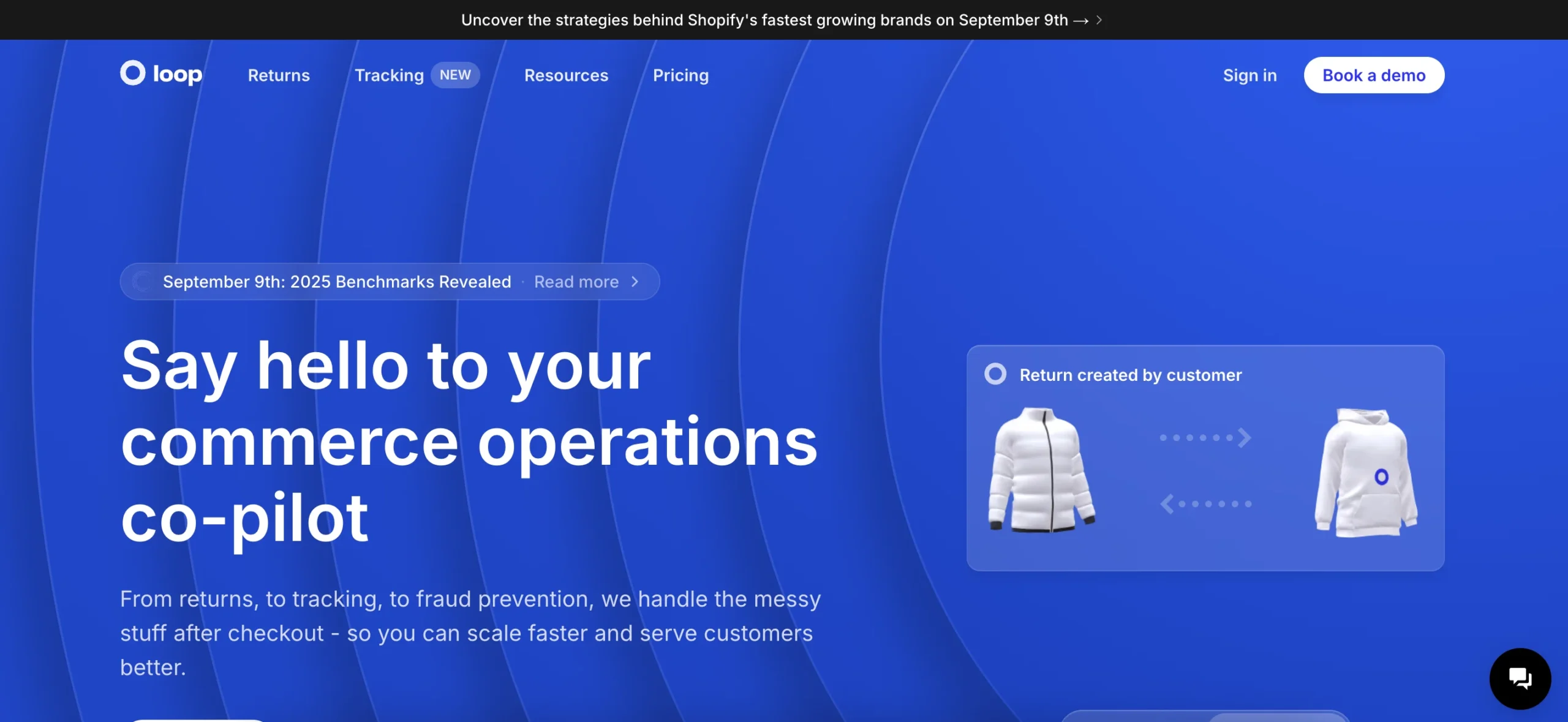
Loop provides solutions for Shopify brands that are looking to optimize returns, exchanges, and reverse logistics.
Key capabilities
- Allows retailers to customize return policies and portals, as well as automated return processes, including mitigating return abuse.
- Provides insights into return rates, processing times, and customer return behaviors.
- Offers automated return notifications and the ability to mitigate return policy abuse and fraud detection.
5. ReturnLogic
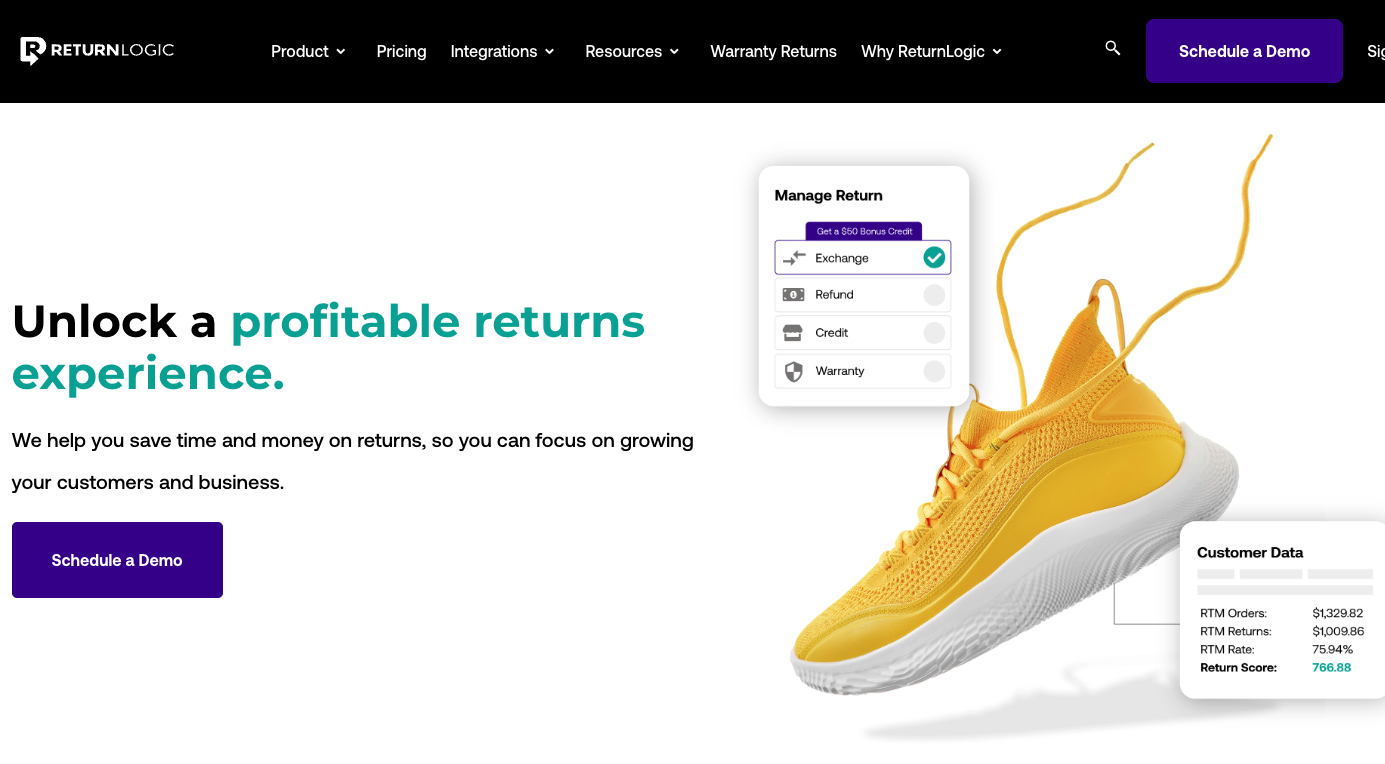
ReturnLogic is a returns management and analytics platform that makes eCommerce returns and exchanges easy for shoppers and retailers.
Key capabilities:
- Provide hassle-free returns experiences by offering an incentive to choose an exchange over a refund.
- Leverage “Return Guard” for return shipping protection so you can recapture costs and boost your bottom line.
- Unlock answers to your return questions with custom insights and clear data.
6. AfterShip
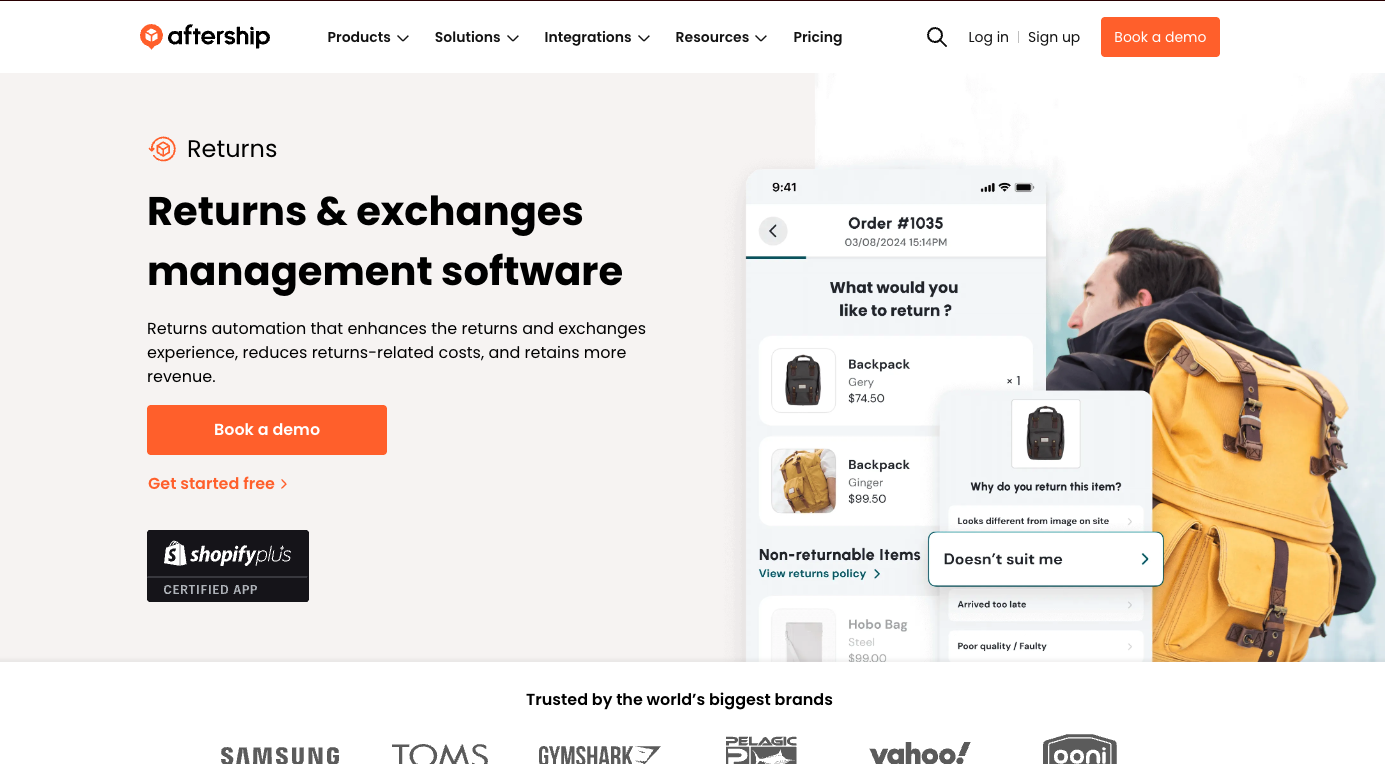
AfterShip is a B2B SaaS platform serving the global eCommerce sector. They offer a suite of SaaS products, including tracking, email marketing, returns management, multi-carrier shipping, shipment insurance, carbon footprint calculation, and estimated delivery date prediction.
Key capabilities:
- Refunds and exchanges: Offer shoppers flexible return resolution, supporting on-store and instant exchanges.
- Return fraud management: Set automated workflows to detect and prevent return fraud by analyzing return frequency for designated shoppers and weight discrepancies.
- Partial returns and bundles: Accept individual item returns from bundled purchases to avoid full bundle returns.
How to choose the right return management solution
To decide what solution will work best, you’ll need to take a step back. It’s important to understand your current challenges, goals, and customer expectations. This way, you can ensure that your new solution aligns perfectly with your business needs and sets the stage for a better returns experience. Here are some key questions that you should ask that can help guide your decision-making process.
How seamless is your current returns experience for customers?
Evaluate whether your returns process feels clunky or confusing. Are customers abandoning purchases because your returns process isn’t easy? Are customers directed to a carrier website to track the returned items? If you notice frequent customer complaints or high inquiry volumes, it’s a sign that a solution focused on convenience and branding may be essential.
How well are you keeping customers informed during the returns process?
Consider how proactive your communication is with customers once they initiate a return. Are you sending regular updates to minimize WISMR (Where Is My Return?) calls, or are your customers left in the dark, resulting in frustration and churn?
Are you offering flexible return options that meet your customers’ needs?
Think about the return methods you currently provide. Are you able to offer exchanges, instant refunds, or multiple return methods like QR codes or in-store returns? If you’re only offering refunds and nothing else, you could be losing revenue and missing out on a better customer experience.
Do you have visibility into return trends and their impact on your business?
Ask yourself whether you’re leveraging data to identify patterns in returns and using that information to optimize your inventory or improve product offerings. Without the right insights, you might be missing opportunities to drive down return rates and boost profitability.
How well-integrated is your returns process with your existing systems?
Assess how well your current systems (ERP, CRM, etc.) handle returns data. Are you constantly dealing with data silos or manual processes? If your systems aren’t talking to each other, it might be time for a solution that bridges those gaps and streamlines your operations.
Key features to consider
After you have answers to the questions in the section above, it’s time to evaluate the capabilities provided by the list of vendors you’ll be taking into consideration. There are plenty of return management solutions that you can choose from that will be “good enough.” But what solution has the best capabilities that fit what your brand needs?
1. Self-service return portal
The best returns management solution for you will offer an embeddable self-service return portal that is easy to use and fully customizable to your brand’s design. The portal should support multiple return methods and allow customers to initiate returns with minimal friction. Also, it should enable customers to generate labels, access return instructions, and select a carrier, if needed.
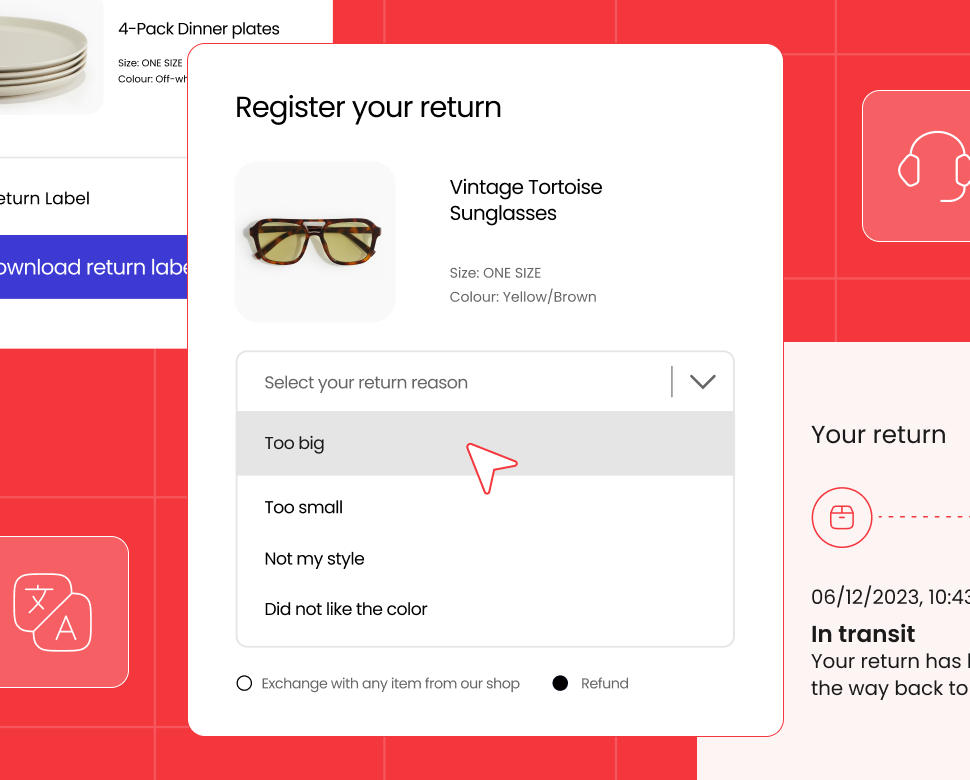
Why does this matter?
- Reinforces brand identity and enhances customer trust through consistent touchpoints from pre- to post-purchase.
- Reduces customer friction and inquiries, freeing up customer service resources.
- Improves customer loyalty by making returns seamless, encouraging repeat purchases.
2. Inbound package tracking
The solution you pick should have real-time tracking of inbound packages, allowing customers and retailers to monitor the status of returns from drop-off to warehouse delivery. It should send proactive and personalized email updates through every step of the returns process and provide visibility through a returns status page.

Why does this matter?
- Lowers WISMR (Where is my return?) calls, reducing the load on customer service and boosting customer satisfaction
- Improves operational efficiency through real-time visibility into the returns process.
- Boosts engagement by leveraging returns communication as an additional revenue touchpoint.
3. Flexible return alternatives
In order to retain revenue and reduce returns, look for a solution that supports a variety of return methods. This includes offering flexible alternatives to refunds, such as exchanging products for different sizes or colors. It should enable you to provide instant refunds for loyal customers and incentives for selecting store credit over refunds.
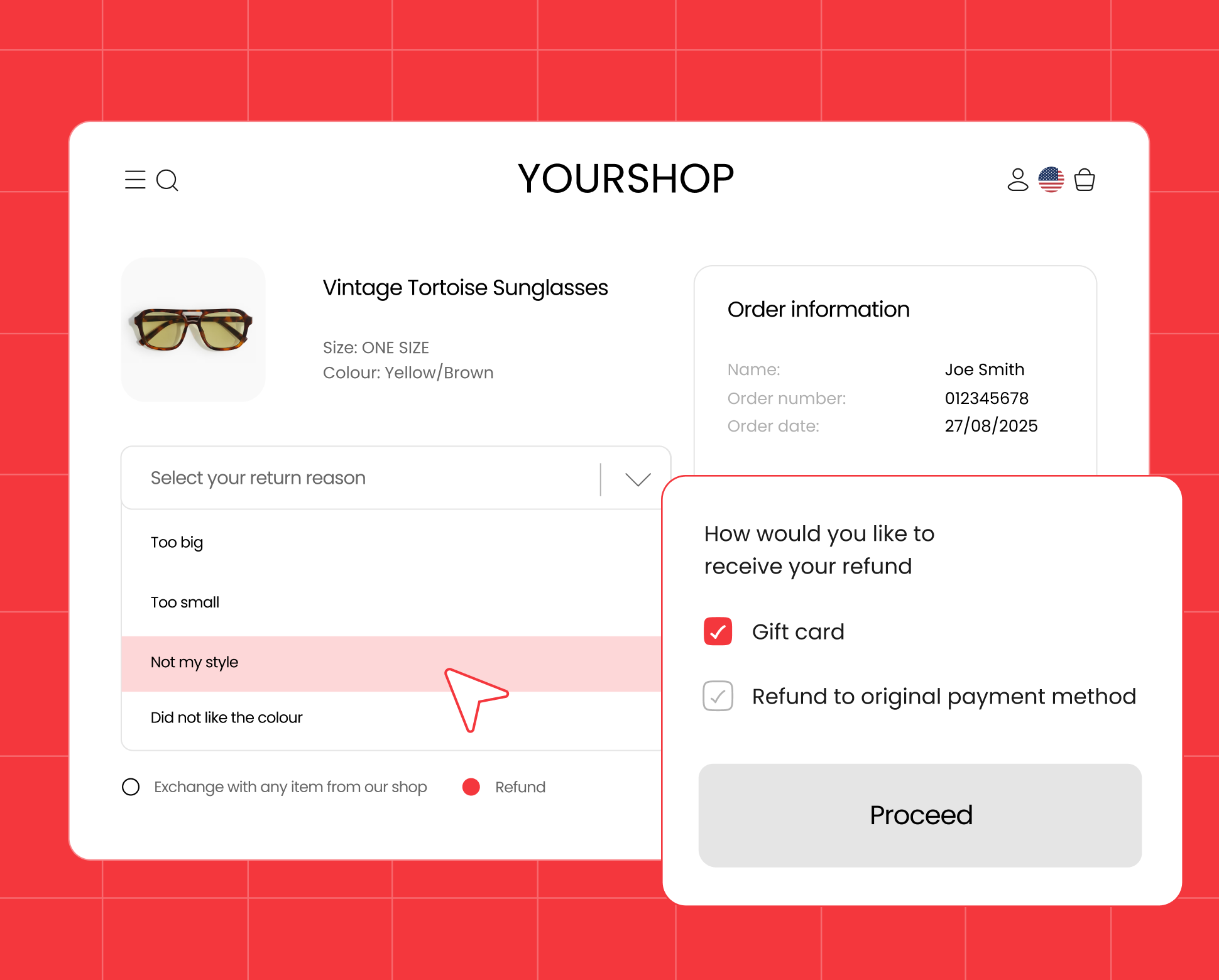
Why does this matter?
- Reduces revenue loss by offering alternative methods instead of refunds.
- Builds customer loyalty through instant refunds, especially for repeat high-value customers.
- Increases future sales through quick issuances of vouchers or store credits.
4. Multiple return methods
A flexible returns solution offers multiple methods for customers to return items. This includes printable labels, QR codes, or in-store returns, so you can cater to different customer preferences. The system should allow customers to select their preferred return method and provide clear instructions for each method.

Why does this matter?
- Increases customer satisfaction by offering flexibility and convenience.
- Minimizes operational inefficiencies by reducing delays or lost items.
- Protects revenue by ensuring quicker restocking and reselling of returned items.
5. Personalized returns workflows
You should be able to design custom flows that handle complex return scenarios while ensuring a smooth and personalized experience for each customer segment. A returns solution shouldn’t be one size fits all. Your brand may have unique rules, and the solution that you pick should be flexible enough to incorporate those. It should also provide testing and pre-publishing capabilities to ensure the reliability of communications before they go live.

Why does this matter?
- Personalizes the return experience, increasing customer satisfaction and loyalty
- Improves operational efficiency by streamlining complex return configurations
- Enhances the customer experience by ensuring relevant, accurate, and timely returns communications.
6. Customer service integration
The right returns management solution will integrate seamlessly with your customer service platform to provide returns tracking and communication history. Customer service agents should be able to quickly access details about returns, allowing them to resolve inquiries faster and more efficiently. The solution should also enable the tracking of returns-related communication, ensuring that the customer experience remains smooth from start to finish.

Why does this matter?
- Minimizes WISMR (Where Is My Return?) calls by providing agents with prompt returns data.
- Increases customer satisfaction by ensuring fast and accurate issue resolution.
- Improves operational efficiency by streamlining customer service interactions related to returns.
7. Seamless integration with existing systems
The solution you choose should integrate seamlessly with your existing systems, such as ERP, CRM, warehouse management, and eCommerce platforms. It should go beyond standard plugins and offer flexible APIs that can aggregate data from multiple sources.
Why does this matter?
- Eliminate data silos and manual data entries by enabling prompt data sharing across systems
- Enhances visibility across the supply chain, leading to better returns management
- Speeds up decision-making by providing a holistic view of return data in one place.
8. Actionable insights
It’s important that the solution you choose offers comprehensive data insights through dashboards and analytics. It should allow retailers to track and monitor key metrics like return rates, product performance, and customer behavior. Additionally, it should provide insights into customer engagement, such as how returns communications (emails, SMS, and order status updates) perform and whether they drive additional revenue.
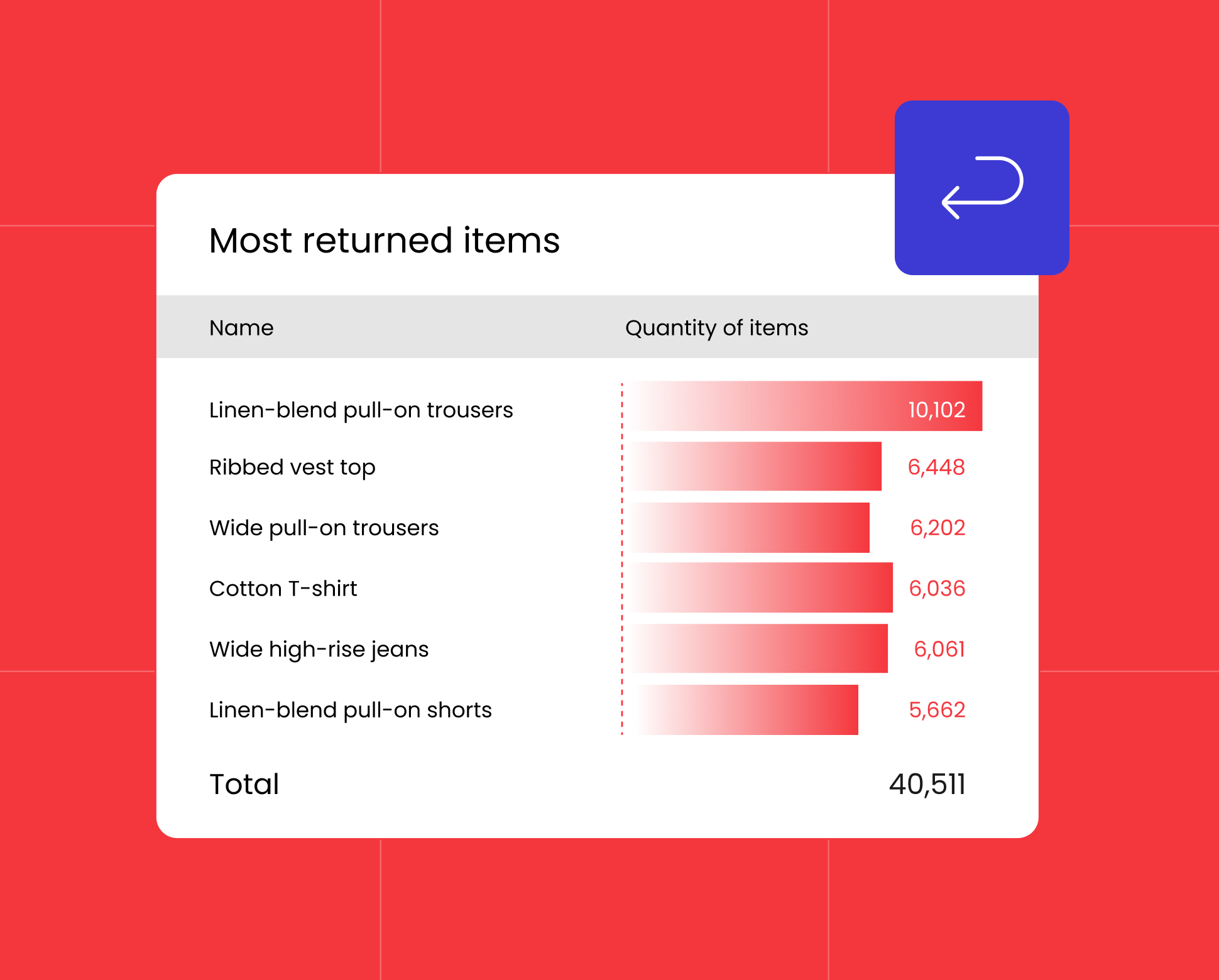
Why does this matter?
- Identifies patterns in return reasons, helping optimize product quality and reduce return rates.
- Provides actionable insights to improve supply chain efficiency and product offerings.
- Boosts revenue recovery through better-informed marketing and returns strategies.
9. Services and support
When selecting a returns management solution, prioritize vendors offering flexible, high-quality service and support. Choose a partner that provides responsive, personalized assistance, understands your business challenges, and adapts quickly. The best vendors ensure smooth returns processes with innovative problem-solving, consistent communication, ongoing technical support, and scalability as your business grows.
Why does this matter?
- Minimizes downtime with proactive support, resolving issues before they affect customer experience or operations.
- Builds trust through flexible, empathetic service, strengthening your relationship with the vendor.
- Drives long-term success by offering innovative, scalable solutions that evolve with your business needs.
Conclusion
Your brand and your customers deserve a returns management solution that is flexible, future-proof, and genuinely invested in your success. Whether you’re a mid-size business looking for ways to grow or a global business looking to increase customer retention rates, a personalized and tailored returns management is a must now and in the future.